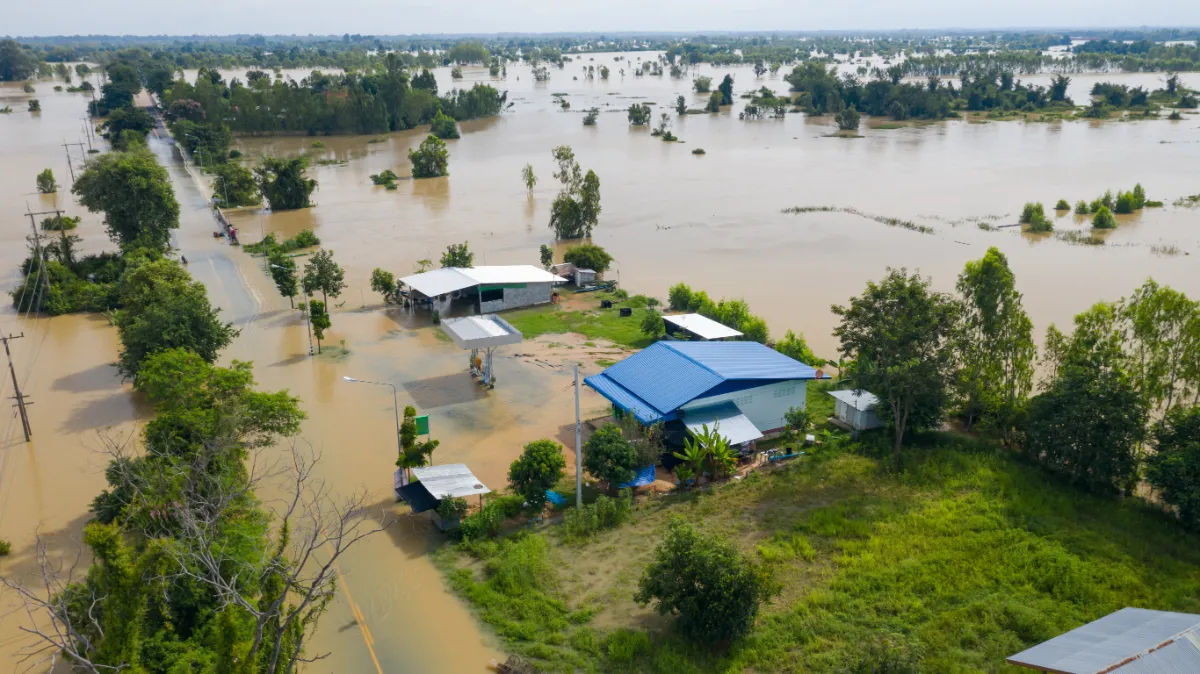Natural disasters can strike at any moment, leaving devastating consequences in their wake. Lives are shattered, communities torn apart, and the road to recovery seems insurmountable. However, in the face of adversity, hope emerges in the form of Geographic Information Systems (GIS). With its unparalleled ability to collect, analyze, and visualize geospatial data, GIS is revolutionizing disaster response efforts and playing a pivotal role in saving lives.
How GIS is Improving Disaster Response
When disaster strikes, time is of the essence. The faster emergency responders can pinpoint affected areas and allocate resources, the more lives can be saved. And this is where GIS truly shines. By integrating real-time data from satellites, weather stations, and ground sensors, GIS provides up-to-the-minute information about disaster areas.
Through GIS mapping and analysis, disaster response teams can precisely identify the areas most in need of assistance. From determining evacuation routes to establishing temporary shelters and medical facilities, GIS helps optimize response strategies. It enables better coordination between organizations, enabling a more efficient and effective response.
One of the key advantages of GIS in disaster response is its ability to provide situational awareness. By overlaying various data layers on a map, responders can gain a comprehensive understanding of the affected areas. For example, they can visualize the extent of flooding, the locations of damaged infrastructure, and the distribution of affected populations. This information allows them to make informed decisions about where to allocate resources and prioritize their efforts.
In addition to situational awareness, GIS also plays a crucial role in communication and collaboration during disaster response. With GIS, different organizations and agencies can easily share and access data, ensuring everyone is working from the same information. This promotes better coordination and avoids duplication of efforts. For example, a local government agency can share its GIS data with a non-profit organization providing relief services, allowing them to align their efforts and avoid overlapping assistance.
Furthermore, GIS can help in the planning and preparedness phase of disaster management. By analyzing historical data and simulating different scenarios, responders can identify high-risk areas and develop mitigation strategies. For instance, GIS can be used to assess the vulnerability of infrastructure to natural hazards, such as earthquakes or hurricanes. This information can then be used to prioritize retrofitting or reinforcement efforts, reducing the potential impact of future disasters.
Another important aspect of GIS in disaster response is its ability to support decision-making in real-time. With the integration of live data feeds, GIS can provide constantly updated information about the evolving situation on the ground. This allows decision-makers to adapt their strategies and resource allocation based on the latest information. For example, if a new hotspot of activity is detected, responders can quickly redirect their efforts to that area, ensuring a swift and targeted response.
Overall, GIS has revolutionized the field of disaster response. Its ability to integrate and analyze vast amounts of data in real-time has significantly improved the efficiency and effectiveness of emergency operations. By providing situational awareness, facilitating communication and collaboration, supporting planning and preparedness, and enabling real-time decision-making, GIS has become an indispensable tool in saving lives and minimizing the impact of disasters.

The Role of GIS in Crisis Management
In times of crisis, effective management is crucial. GIS (Geographic Information System) is a powerful tool that aids decision-making by providing a comprehensive overview of the disaster’s impact. By overlaying data on population density, vulnerability indices, and infrastructure, GIS assists in identifying high-risk areas.
Imagine a scenario where a major earthquake strikes a densely populated city. The initial response teams are dispatched to assess the situation and provide immediate assistance. However, without a clear understanding of the affected areas and their specific needs, the response efforts may be scattered and inefficient.
This is where GIS comes into play. By utilizing GIS technology, crisis managers can analyze and visualize data in real-time, allowing them to identify the areas with the highest population density and vulnerability. This information enables them to prioritize their response efforts and allocate resources effectively.
But GIS doesn’t stop at just identifying high-risk areas. It also helps streamline communication among various response teams and stakeholders. Real-time data visualizations and dashboards facilitate efficient collaboration, enabling a synchronized response effort.
For example, imagine a situation where multiple response teams are working simultaneously to provide medical assistance, search and rescue operations, and infrastructure restoration. With GIS, these teams can share their location data, progress updates, and resource requirements in real-time. This level of coordination ensures that efforts are not duplicated, and resources are allocated where they are most needed.
Furthermore, GIS allows for the integration of various data sources, such as satellite imagery, weather forecasts, and social media feeds. By incorporating these additional data sets, crisis managers can gain a more comprehensive understanding of the situation and make informed decisions.
With GIS, crisis management becomes proactive rather than reactive, fostering quicker decision-making and reducing the overall impact of the disaster. By having access to up-to-date information and analysis, decision-makers can anticipate potential challenges and plan their response strategies accordingly.
In conclusion, GIS plays a vital role in crisis management by providing decision-makers with the necessary tools to analyze, visualize, and communicate critical information. By leveraging GIS technology, response efforts can be more targeted, efficient, and coordinated, ultimately leading to better outcomes for affected communities.

Leveraging GIS to Enhance Disaster Response
GIS not only assists in the immediate aftermath of a disaster but also plays a vital role in the recovery and rebuilding process. By analyzing data on damages, GIS helps assess the extent of destruction and prioritize restoration efforts. This ensures that resources are allocated where they are most needed, expediting the recovery process.
Additionally, GIS enables monitoring and evaluation of ongoing response efforts. By tracking the distribution of aid and resources, GIS helps ensure that assistance reaches those who need it the most. This transparency fosters accountability and prevents the mismanagement of resources.
Integrating GIS into Disaster Response Strategies
GIS is no longer an optional tool; it has become an essential component of disaster response strategies. Government agencies, non-profit organizations, and humanitarian groups are increasingly incorporating GIS into their operations. This integration allows for a more data-driven and evidence-based approach to disaster response.
By harnessing the power of GIS, responders can better understand the changing dynamics of a disaster and adapt their strategies accordingly. They can identify patterns and trends, enabling them to anticipate future challenges and develop proactive measures to mitigate their impact.
Real-Time Mapping for Faster Disaster Response
Real-time mapping is a game-changer in disaster response. By utilizing GIS technology, responders can instantly visualize the evolving situation on the ground. This real-time information helps prioritize rescue and relief efforts, ensuring that the most vulnerable populations are reached in a timely manner.
Furthermore, real-time mapping allows for better resource allocation. By tracking the movement of supplies, responders can ensure that aid is delivered where it is needed most urgently. This optimization minimizes delays and reduces the risk of resource shortages, ultimately saving more lives.
The Benefits of Utilizing GIS in Disaster Response
The benefits of utilizing GIS in disaster response are numerous and far-reaching. Beyond its ability to provide real-time information and improve decision-making, GIS also enhances communication and coordination among response teams. It fosters collaboration between organizations and facilitates the sharing of data and resources.
Furthermore, GIS enables the collection of invaluable data during and after a disaster. This data can be used to enhance future disaster preparedness and response efforts. By learning from past experiences and analyzing geospatial information, communities can become more resilient in the face of future disasters.
GIS is not just a tool; it is a lifeline in times of crisis. Its power to save lives and expedite recovery efforts cannot be overstated. By harnessing the full potential of GIS, we can ensure a more rapid and effective response to disasters, leaving no one behind. The future of disaster response lies in the hands of GIS, leading us towards a safer and more resilient world.


